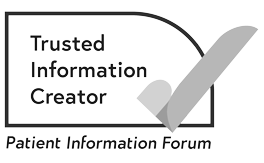Non-small cell lung cancer (NSCLC)
Choose a type
On this page
What is non-small cell lung cancer?
Non-small cell lung cancer (NSCLC) is the most common main type of lung cancer. The other main type is small cell lung cancer (SCLC) but only 10% to 15% of lung cancers are SCLC.
Cancer that starts in the lung is called primary lung cancer. The lungs are the parts of the body that we use to breathe. Lung cancer is the third most common cancer in the UK. About 49,200 people are diagnosed with it each year.
In this video Dr Ranj is joined by Dr David Gilligan to take an in-depth look at lung cancer, exploring its symptoms, testing, stages and treatment options.
Sometimes cancer spreads to the lungs from somewhere else in the body. This is called lung metastases or secondary lung cancer.
Types of non-small cell lung cancer
There are 3 main types:
- Adenocarcinoma is the most common type. It develops from cells that make mucus and is more often found in the outer area of the lung. Although the main cause is smoking, this type of NSCLC is more common in non-smokers.
- Squamous cell carcinoma develops in the cells that line the airways. It is more often found in the main airways in the centre of the lungs.
- Large cell lung cancer is a very uncommon type that usually starts in the centre of the lungs.
- Sometimes doctors cannot say for certain what type of NSCLC it is. This is called NSCLC not otherwise specified.
Other terms used
Some non-small cell lung cancers are grouped in terms of whether they produce too much of a protein that helps the lung cancer cells to grow. This happens because the lung cancer cells have a certain gene change (mutation).
These cancers usually affect people with adenocarcinoma NSCLC who have not smoked. They can be more common in younger people, especially women. They are also more common in East Asian people. For example:
- ALK positive lung cancer is when the NSCLC cells have a change in a gene called ALK. The ALK Positive UK website provides support and information you might find helpful.
- EGFR positive lung cancer is when the NSCLC cells have a change in a gene called EGFR. The EGPFR Positive UK website also provides information and support.
Related pages
Symptoms of non-small cell lung cancer
Some of the common symptoms of lung cancer are a cough for 3 weeks or more, breathlessness, or a chest infection that does not get better. These symptoms can be caused by other lung conditions or by smoking. But it is always important to get them checked.
Early lung cancer might not cause any symptoms. Sometimes it might be found during tests to investigate another condition.
We have more information about lung cancer symptoms.
Related pages
Causes of non-small cell lung cancer
Smoking tobacco is the cause of most lung cancers and the biggest risk factor. This includes smoking cigarettes, cigars and pipes.
Some people who have never smoked can also get lung cancer. Around 15 in 100 people (15%) diagnosed with lung cancer are people who have never smoked. This is known as non-smoking lung cancer. The Ruth Strauss Foundation has more information.
Lung cancer is more common in older people. There are other possible risk factors, such as passive smoking. We have more information about the causes and risk factors of lung cancer.
Related pages
Diagnosis of non-small cell lung cancer
If you have symptoms, you will usually begin by seeing your GP, who will examine you. If they think that your symptoms could be caused by lung cancer, they will arrange a chest x-ray or might refer you to a chest doctor urgently.
For some people, lung cancer is diagnosed after they have been admitted to hospital as an emergency. This may be when the cancer is more advanced and causing serious symptoms or complications. Sometimes lung cancer might be diagnosed through lung cancer screening to diagnose people at risk of lung cancer at an early stage.
At the hospital a specialist nurse or doctor will examine you and talk to you about the tests you need. Tests may include:
-
Chest x-ray
If you have not already had one, you may have a chest x-ray to check your lungs.
-
CT scan
Most people have a CT scan. If you have certain symptoms, you might have a CT scan, even if your chest x-ray is normal.
-
PET-CT scan
You may have a PET scan and a CT scan together. PET-CT scans give more detailed information about the part of the body being scanned.
-
Biopsy
You usually have a biopsy to find out for certain if you have lung cancer. During a biopsy, a doctor or nurse takes samples of cells or tissue from the abnormal area to check for cancer cells. Your cancer doctor or nurse will talk to you about the type of biopsy you will have. There are different ways of taking biopsies for lung cancer. These include:
An expert doctor in cell types called a pathologist examines the biopsy samples in the laboratory. The results of the biopsy tell your doctor if there is cancer and the type of lung cancer that you have.
Waiting for test results can be a difficult time. We have more information that can help.
Furthers tests after diagnosis
Your specialist usually arranges further tests to find out more about the size and position of the cancer and whether it has spread.
-
Mediastinoscopy
A mediastinoscopy is sometimes done instead of an EBUS or EUS. It lets the doctor look at the area in the middle of your chest (the mediastinum) and nearby lymph nodes. You have it under a general anaesthetic.
-
Thoracoscopy
A thoracoscopy lets the doctor look at the lining of the lungs (pleura) and take a biopsy of the pleura.
-
MRI scan
An MRI scan uses magnetism to build up a detailed picture of areas of the body. Doctors may use it to find out the size of a cancer and whether it has spread.
Tests on your lungs and heart
Tests on the lung cancer cells
If you have non-small cell lung cancer your doctors usually arrange more detailed tests on the lung cancer cells. This is sometimes called molecular testing.
Molecular testing tells whether the cancer cells have:
- gene changes (mutations) that make the cancer cells produce too much of a protein that encourages the cells to grow
- high levels of a proteins that prevent the immune system from being able to attack the cancer cells.
The results tell your cancer doctor if targeted therapy drugs or immunotherapy drugs are likely to work for you.
Liquid biopsy
Related pages
Staging of non-small cell lung cancer
The results of your tests help your doctors find out more about the size and position of the cancer and whether it has spread. This is called staging. Knowing the stage helps your doctors plan the best treatment for you.
We have more information about the staging of lung cancer.
Treatment for non-small cell lung cancer
A team of specialists will meet to discuss the best possible treatment for you. This is called a multidisciplinary team (MDT).
Your doctor or cancer specialist or nurse will explain the different treatments and their side effects. They will also talk to you about things to consider when making treatment decisions. You will need this information before you give your permission (consent) to have any treatment.
The treatment you have will depend on:
- the stage of non-small cell lung cancer
- the results of tests on the lung cancer cells
- your general health
- how able you are to do everyday things – this is called your performance status
- your treatment preferences.
Treatment for non-small cell lung cancer can include:
- surgery
- radiotherapy
- chemotherapy
- targeted and immunotherapy drugs.
You might have a combination of treatments.
-
Surgery
Surgery for non-small cell lung cancer can include removing a lobe of the lung, a small part of the lung, or the whole lung. You usually have surgery to treat early-stage non-small cell lung cancer and sometimes locally advanced NSCLC.
You may have other treatment before or after surgery.
We have more information about surgery for lung cancer and your recovery.
-
Radiotherapy
Radiotherapy uses high-energy rays (radiation) to destroy cancer cells. Some people have radiotherapy instead of surgery, to try to cure early-stage NSCLC. This is usually with stereotactic ablative radiotherapy (SABR). Or you might have radiotherapy after surgery to reduce the risk of lung cancer coming back.
If the cancer is locally advanced you might have radiotherapy at the same time as chemotherapy (called chemoradiation). If the cancer has spread radiotherapy might be used to improve certain symptoms.
We have more information about radiotherapy for lung cancer and its side effects.
-
Chemotherapy
Chemotherapy uses anti-cancer drugs to destroy cancer cells. You may have it before or after surgery. It can also be given at the same time as radiotherapy (chemoradiation).
We have more information about chemotherapy for lung cancer and its side effects.
-
Targeted therapy
Targeted therapy drugs target something in or around the cancer cell helping it grow. You take them as tablets or capsules. They can be given on their own, or with or after other lung cancer treatments. The targeted therapy drug you have will depend on the results of tests on the cancer cells that look for a gene change.
We have more information about targeted therapy drugs for NSCLC and their side effects.
-
Immunotherapy
Immunotherapy drugs use the immune system to find and attack cancer cells. You usually have the drugs given to you as a drip into a vein (intravenous). You might have them on their own or before or after other treatments.
We have more information about immunotherapy drugs for NSCLC and their side effects.
-
Tumour ablation treatments
Tumour ablation treatments include radiofrequency ablation, microwave ablation or photodynamic therapy. They use heat or laser light to destroy cancer cells. They are sometimes used to treat very early-stage lung cancer. Other ablation treatments are used to relieve symptoms, for example. if the cancer is blocking an airway.
We have more information about ablation treatments for lung cancer.
-
Supportive treatments
Lung cancer can cause different symptoms, such as breathlessness, cough or pain. It may also cause conditions such as blocked airways, superior vena cava obstruction (SVCO) or pleural effusion. Treatments for lung cancer help to improve these and to reduce symptoms. But there are also other ways to control symptoms.
We have more information about controlling symptoms of lung cancer.
You can read an overview of the different treatment options for lung cancer.
You may have some treatments as part of a clinical trial.
After non-small cell lung cancer treatment
Follow-up after treatment for non-small cell lung cancer
You will have regular check-ups during and after your treatment. Some people may be on treatment for months or years if it is working well for them.
You might have CT scans or chest x-rays as part of your follow up. Appointments might be in person, or by phone or video. These will be every few months at first, but eventually they may be once a year.
Tell your doctor or specialist nurse as soon as possible if you have any problems or notice new symptoms between appointments.
We have more information about follow-up care after treatment.
Support after non-small cell lung cancer
People often have many different feelings when they finish cancer treatment. You may feel relieved that treatment has finished, but worried about what will happen in the future.
We have information below about some of the things people ask about after small cell lung cancer treatment. But you may have other questions or need information about something else.
Macmillan is here to support you. If you would like to talk, you can:
- Call the Macmillan Support Line on 0808 808 00 00.
- Chat to our specialists online.
- Visit our lung cancer forum to talk to people who have been affected by lung cancer, share your experience, and ask an expert your questions.
Other organisations who offer information and support
ALK Positive UK provides support and advocacy and aims to improve the survival and quality of life of ALK positive lung cancer patients in the UK.
EGFR Positive UK provides support and advocacy and aims to improve the overall survival and quality of life of EGFR positive lung cancer patients across the UK.
Roy Castle Lung Cancer Foundation provides information and practical and emotional support for anyone affected by lung cancer.
Sex life
Fertility
Well-being and recovery
It can take time to recover after lung cancer treatment. Some days you may feel better than others.
Looking after yourself can help speed up your recovery. Even small lifestyle changes may improve your well-being and long-term health.
Even if you already have a healthy lifestyle, you may choose to make some positive changes after treatment. We have more information on leading a healthy lifestyle after treatment.
It is important to know where to get support or information if you need it. People often need support even some time after non-small cell lung cancer treatment. But sometimes it is difficult to know who to ask for help. To find support:
- ask your GP or someone from your cancer team for advice about support in your area
- search cancercaremap.org to find cancer support services near you
- call us free on 0808 808 0000 or talk to us online - our cancer information and support specialists can offer guidance and help you find what you need.
About our information
This information has been written, revised and edited by Macmillan Cancer Support’s Cancer Information Development team. It has been reviewed by expert medical and health professionals and people living with cancer.
-
References
Below is a sample of the sources used in our lung cancer information. If you would like more information about the sources we use, please contact us at informationproductionteam@macmillan.org.uk
National Institute for Health and Care Excellence (NICE). Lung cancer – Diagnosis and management. Clinical guideline 2019. Last updated 2023. (accessed Nov 2023) Available at: https://www.nice.org.uk/guidance/ng122
European Society for Medical Oncology (ESMO). Small-cell lung cancer: ESMO clinical practice guidelines for diagnosis, treatment and follow-up. 2021. (accessed Nov 2023). Available at: https://www.esmo.org/guidelines/guidelines-by-topic/esmo-clinical-practice-guidelines-lung-and-chest-tumours/small-cell-lung-cancer
European Society for Medical Oncology (ESMO). Early and locally advanced non-small-cell lung cancer (NSCLC): ESMO clinical practice guidelines for diagnosis, treatment and follow-up. 2017. eUpdate 01 September 2021: New Locally Advanced NSCLC Treatment Recommendations (accessed Nov 2023) Available at: https://www.esmo.org/guidelines/esmo-clinical-practice-guideline-early-stage-and-locally-advanced-non-small-cell-lung-cancer
European Society for Medical Oncology (ESMO). ESMO expert consensus statements on the management of EGFR mutant non-small-cell lung cancer. 2022 (accessed Nov 2023). Available at: https://pubmed.ncbi.nlm.nih.gov/35176458/
Date reviewed

Our cancer information meets the PIF TICK quality mark.
This means it is easy to use, up-to-date and based on the latest evidence. Learn more about how we produce our information.
The language we use
We want everyone affected by cancer to feel our information is written for them.
We want our information to be as clear as possible. To do this, we try to:
- use plain English
- explain medical words
- use short sentences
- use illustrations to explain text
- structure the information clearly
- make sure important points are clear.
We use gender-inclusive language and talk to our readers as ‘you’ so that everyone feels included. Where clinically necessary we use the terms ‘men’ and ‘women’ or ‘male’ and ‘female’. For example, we do so when talking about parts of the body or mentioning statistics or research about who is affected.
You can read more about how we produce our information here.





